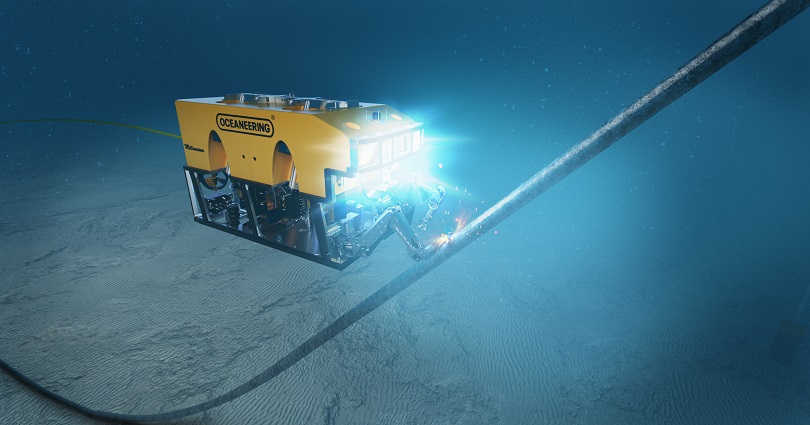Remotely Operated Vehicles (ROVs) have emerged as an invaluable tool in the offshore industry, offering the capability to explore, inspect, and maintain underwater structures with unparalleled precision and efficiency. In this article, we will delve into the fascinating world of ROVs, exploring their definition, technology, and the vast array of applications in the offshore industry.
What is an ROV?
An ROV, short for Remotely Operated Vehicle, is a submersible robotic system designed to navigate underwater environments while being remotely controlled by operators on the surface. These sophisticated machines are equipped with various sensors, cameras, thrusters, and manipulator arms, enabling them to perform intricate tasks at considerable depths with dexterity and precision.
ROVs come in different sizes and configurations, depending on the specific needs and requirements of the offshore operation. They can be tethered or untethered, with tethered Remotely Operated Vehicles being linked to the surface through a cable, providing power and real-time data transmission.

ROV Technology
The core technology of Remotely Operated Vehicles is centered around robust engineering and advanced electronics. They are constructed to withstand the harsh conditions of the deep sea, including immense pressure, extreme temperatures, and corrosive saltwater.
Modern ROVs are integrated with high-definition cameras, sonars, and other specialized sensors, providing operators with a clear and detailed view of the underwater environment. Additionally, their thrusters enable precise maneuverability, allowing them to hover, ascend, and descend with ease.
Applications in the Offshore Industry
Oil and Gas Exploration
In the oil and gas industry, Remotely Operated Vehicles play a pivotal role in exploring and inspecting underwater installations such as drilling platforms and pipelines. They can conduct thorough inspections, identifying potential issues and defects without the need for costly and time-consuming human divers.
Subsea Construction and Maintenance
Remotely Operated Vehicles are utilized in the construction and maintenance of offshore infrastructure. From installing subsea pipelines and cables to conducting repairs on underwater structures, these robots significantly reduce human intervention, ensuring enhanced safety and cost-effectiveness.
Environmental Monitoring
The offshore industry places great emphasis on environmental sustainability. Remotely Operated Vehicles aid in conducting ecological surveys and monitoring underwater habitats, helping to assess the impact of industrial activities on marine ecosystems and biodiversity.
Search and Rescue Operations
During emergencies and accidents, Remotely Operated Vehicles prove instrumental in search and rescue operations. They can navigate hazardous underwater conditions, locate stranded or lost personnel, and provide critical information to responders on the surface. ROVs have been issued as well on the latest incident from submarine tour of the Titanic’s wreckage, where due to the remote location and extreme conditions, Remotely Operated Vehicles have been used to identify the rests of the exploring submarine.
Underwater Surveys
Remotely Operated Vehicles are extensively used for seabed mapping, geophysical surveys, and archaeological research. They enable scientists and researchers to explore the ocean floor with unmatched accuracy, unearthing hidden secrets and uncovering ancient shipwrecks.
Benefits of ROVs in the Offshore Industry

Safety and Risk Mitigation
By eliminating the need for human divers to undertake hazardous tasks, Remotely Operated Vehicles enhance safety and reduce the risk of accidents in the offshore industry. Operators can remotely control the ROVs from the safety of a vessel or onshore control center.
Cost-Effectiveness
ROVs offer significant cost savings by streamlining operations and reducing downtime. Regular inspections and maintenance performed by Remotely Operated Vehicles prevent costly equipment failures and unplanned shutdowns.
Real-Time Data and Decision Making
Remotely Operated Vehicles provide real-time data and video feeds to operators, enabling prompt decision-making during critical operations. This ensures timely responses to potential issues, enhancing overall efficiency and productivity.
Final Thoughts
This marvels of engineering, Remotely Operated Vehicles, have revolutionized the offshore industry, pushing the boundaries of exploration, maintenance, and environmental stewardship. With their technological prowess and ability to navigate the depths of the ocean, these remotely operated marvels have become indispensable in ensuring the sustainability and success of offshore operations. As technology continues to advance, the capabilities of Remotely Operated Vehicles will only grow, promising an even more exciting future for the offshore industry.
See as well for more related offshore articles 5 Largest Offshore Construction Vessels (OCV)
